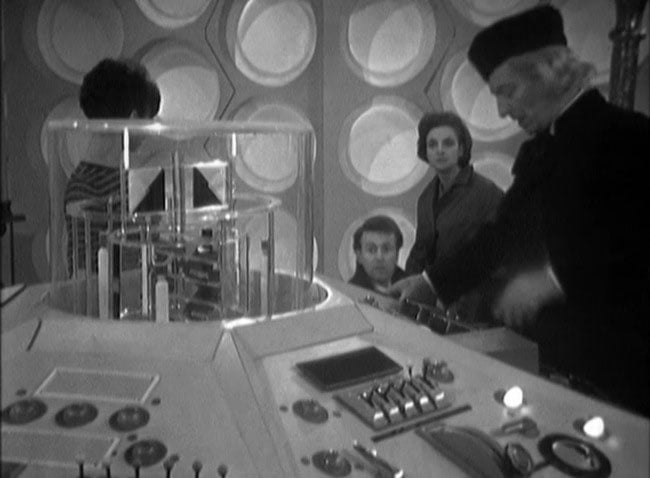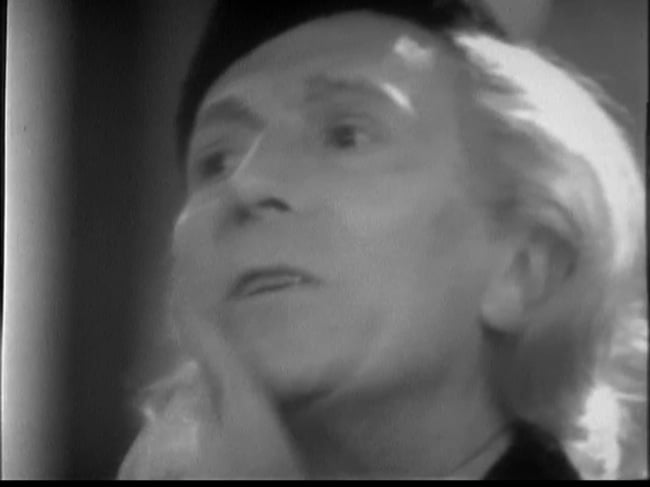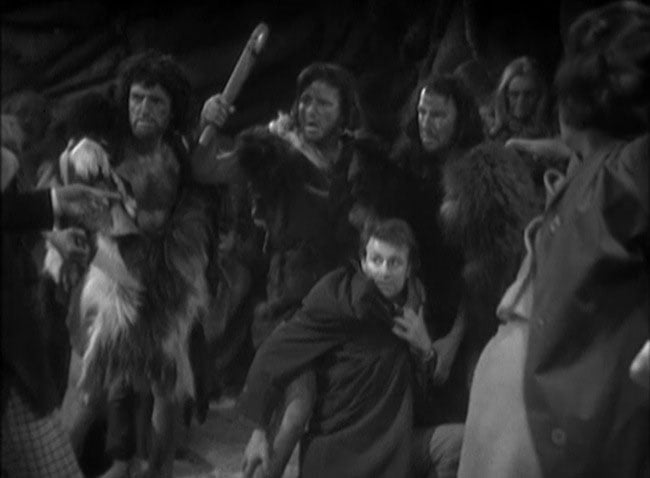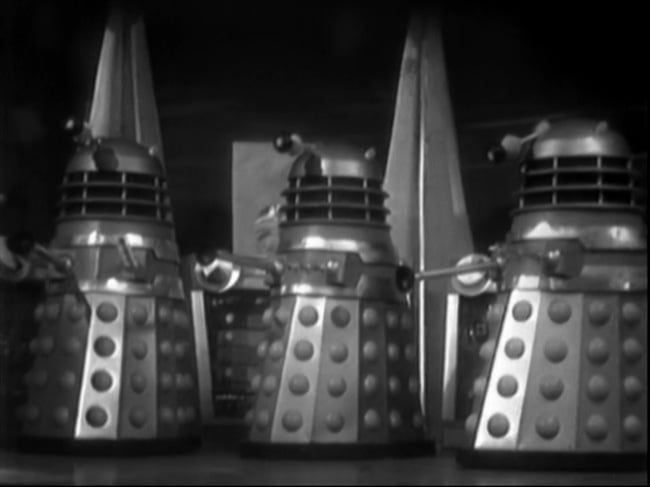This article is more than 1 year old
Doctor Who Episode One: Through a glass. Darkly
A franchise saved by a lack of anything else on TV
England swings like the pendulum do
As it happens, Susan won’t be getting the chance to immerse herself in full-on Swinging London rebellion anyway, because it’s her last day on Earth - at least for 1963, at least for the moment. She’ll miss the first singles from the Kinks and the other Who (1964, both), but in a future episode she’ll return to a Dalek-devastated Britain that looks rather in keeping with the sleeve art of Who’s Next and/or an alternative version of the dying years of the Callaghan government. So the poor girl’s going to pretty much miss the 1960s.

“It doesn’t roll around on wheels, you know”
Source: BBC
But I get ahead of myself, because before that can happen Barbara and Chesterton (Ian is seldom used) stalk Susan to the junk yard, possibly with a view to reporting her and her mysterious “grandfather” to social services. Except that I see that social services departments as we know them today didn’t really start to take shape until the tail end of the 1960s. But they were definitely going to interfere, anyway. The two teachers push their way into the Tardis and we finally meet the Doctor, who at this stage in his career is in no sense the implacable opponent of emotionless galactic fascists that he’d become.
Would it be a step too far to suggest that William Hartnell’s Doctor of stories one and two would have gone with Chamberlain and the appeasers in the 1930s? Yes, it probably would, but he’s certainly a grumpy, selfish and devious old man devoid of concern for the human race, or (story two) the post-conflict-turned-peacenik Thals, who the Doctor tricks into entering the Dalek’s city. Early Hartnell Who has the seeds of a more complex and interesting character than the Doctor would become, which is possibly a pity.

Yes, the Doctor (William Hartnell) did start out as a miserable old git
Source: BBC
But, faced with the possibility of his own life and the space-time continuum being disrupted by these two teachers who know too much, he throws the switches, and off we go to the first of what will be a long series of disused quarries. So begins the franchise.
Unsteadily, though. Until I watched the DVD a month or so back, I’d entirely blanked the next three episodes of story one from my memory, and somehow managed to stick the first episode of story two onto it instead. I suppose I must have watched the whole of story one - nothing else on on a Saturday evening, and everything’s closed - but if I can remember anything at all it’s that it really wasn’t very good.

Cavefolk, 1963-style
Source: BBC
And the reviews (here, here and here) seem to bear this out - of a strong first episode and weak following three that comprised the first story.
An Unearthly Child was, after all, a story of one and three quarters: the first episode introducing the Doctor and the following three spinning off on that adventure. Only we went from 1963 AD to 100,000 BC, with cave men and primitive society. This was pre Gary Larson and pre Monty Python, of course, but nevertheless comedy cavemen were still widely viewed as rubbish.
So joining together a relatively decent first episode from an An Unearthly Child and a cliffhanger in the following story (The Daleks) where Barbara is apprehended by her first Dalek (in the episode Dead Planet) makes sense and is what I think history has done. First time around the Daleks are a bit rubbish too, a surprising pushover for an outfit that’ll shortly be hell-bent on galactic domination, but at least they’re not wearing stupid furs. And at least they’re not as bad as those pathetic Thal weeds.

Plungers into kids’ imaginations: the Daleks
Source: BBC
Viewing tips
The DVD seemed to me to be a whole lot less atmospheric than I remembered episode one as being. But of course - in 1963 we were watching a dodgy signal on very dodgy equipment, and a kind of moody foggy drizzle came as standard. So if you want the full-on experience, I suggest you watch one of the grottier versions of episode one that you can find on YouTube. Episodes two to four I suggest you don’t watch at all, and while story two is fairly lame even though it introduces the Daleks in two episodes, you might want to watch that because it’s where it all started, and what actually saved the franchise - which is a word we didn’t use in 1963.
If you really want to see the Daleks at the height of their powers, however, you should get hold of a copy of The Power of the Daleks, Patrick Troughton’s first outing and probably my absolute favourite. But wait, you can’t, because the BBC wiped it and it no longer exists. Ha. ®
